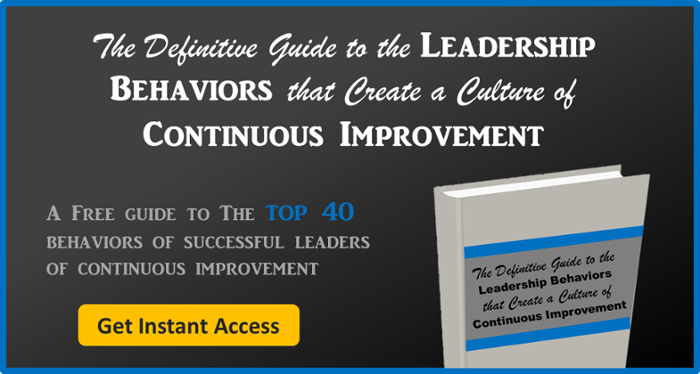 The great philosopher Aristotle is reported to have said, “’Quality is not an act. It is a habit.”
The great philosopher Aristotle is reported to have said, “’Quality is not an act. It is a habit.”
Many business leaders who agree are turning toward an approach called Continuous Quality Improvement (CQI). Continuous Quality Improvement involves creating an environment in which management and employees work together to achieve constantly improving quality. Rather than reacting to quality problems when there is a crisis, organizations that embrace CQI embark on a never ending, proactive, journey toward delivering the highest quality possible every single time a product or service is delivered.
The Core Concepts of Continuous Quality Improvement
As with most business methodologies, there are some underlining assumptions that form the foundation for CQI. Companies that benefit from CQI typically take for granted that:
- Quality means meeting or exceeding the expectations of internal and external customers.
- Most problems are the result of flawed processes, not bad people. The goal is to improve processes, not place blame.
- Predictable, repeatable processes are essential to quality improvement. Unintended variations in processes should usually be eliminated.
- Not all change is improvement. Therefore, data is essential for establishing baseline results and demonstrating quantifiable improvement.
- Continuous Quality Improvement is not an event. It is a natural extension of the daily responsibilities of every employee.
"Quality is everyone's responsibility."
- W. Edwards Deming
The Continuous Quality Improvement Cycle
Because CQI is never “finished,” it is best described as a cycle rather than a process or a series of steps. Organizations work through the cycle starting with planning and ending with analysis and then begin the cycle again without hesitation.
Planning
The cycle begins when an opportunity for improvement is identified. A problem statement is developed and the specific issues to be addressed are defined. Clearly articulating the scope of the improvement is essential to keeping the effort focused and increasing the likelihood of timely, impactful results.
Data Collection
Next, the current process state is defined and, where applicable, visualized. Stakeholders should be consulted so that the current state definition is a reflection of what actually happens, not what the manual says should be happening. At this stage, data regarding the quality of outputs of the current process is collected or created if needed.
Root Cause Analysis
Once the data is in hand, it can be analyzed to identify the underlying causes of problems. Some companies use the "5 Whys" methodology for uncovering hidden factors that result in defects or delays. The analysis should lead to a hypothesis about what changes can be made to address the core issues.
Implementation
At this point, an action plan is developed and executed to implement the proposed improvement. Keep in mind that impact analysis will be easier and the time to improvement shorter if the scope of change is limited. Because quality improvement will be continuous, there is no reason to try to execute many improvements all at one time.
Impact Analysis
Once the improvement has been implemented, data is gathered to demonstrate its effect. In addition to analyzing the results of the improvement as it relates to quality, the improvement process itself should be assessed to determine if any changes would result in a smoother or more effective course of action for the next round.
Employee Recognition and Broadcasting
Some books and articles on Continuous Quality Improvement omit this step, but we think it is crucial. In order to maintain momentum for CQI and keep the cycle spinning, it is essential to share the results of the initiative with the organization and to congratulate and reward those employees who were instrumental to success. This helps create a culture of quality and ensures that forward momentum will be maintained.
It is realistic to make Continuous Quality Improvement a way of life for most any organization. Leaders must be prepared to communicate the underlying assumptions of the approach and to provide the tools that will be necessary for supporting the steps in the cycle. Successful organizations find that one improvement leads to another and the will of the team to seek out and execute improvement grows only stronger over time.



Add a Comment